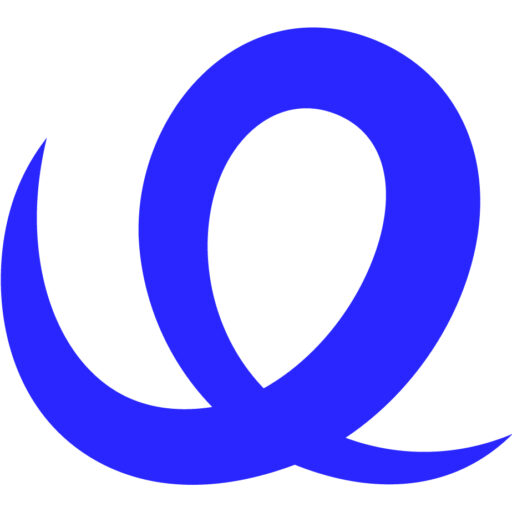
Jump to a section:
Norfolk sits at the nexus of American sea power, global trade, and heavy industry. If your go‑to‑market relies on defense, maritime logistics, or complex industrial supply chains, this is a market you can’t treat as “just another coastal city.” In 2025, capacity upgrades at the port, multi‑billion‑dollar infrastructure projects, and an evolving shipbuilding workforce are reshaping demand signals. Below, we translate the noise into a clear playbook for growth.
Executive Snapshot
Norfolk’s economy is anchored by three flywheels: the world’s largest naval complex, a deep and rapidly modernizing container gateway, and a shipbuilding/repair ecosystem that touches virtually every naval platform. Those flywheels spin faster in 2025 thanks to deeper channels, expanded on‑dock rail, and once‑in‑a‑generation transportation improvements across the harbor. They also face pressure—tight skilled labor supply, defense program timing, and construction timelines on huge civil works.
For commercial teams, the punchline is simple: Norfolk rewards category expertise and relationship density. Decision‑making is centralized around base access and port operations, with procurement influenced by federal rules, OEM backlogs, and ship availability windows. Velocity comes from partnering into the ecosystem rather than selling “at” it.
- Defense concentration: Naval Station Norfolk anchors a region where about four of every ten dollars of economic activity is tied to DoD—translation: long cycles, high compliance, and sticky revenue when you win.
- Port advantage: The Port of Virginia processed 3.5M TEUs in FY24 and is completing 55‑foot channels in 2025, positioning it as the East Coast’s deepest harbor and an all‑weather alternative for shippers.
- Industrial capacity: Shipbuilding/repair demand is robust, but workforce churn remains the friction point—expect schedule sensitivity and vendor vetting to intensify.
- Access upgrades: The Hampton Roads Bridge–Tunnel (HRBT) expansion, NIT rail build‑out, and ORF air‑lift growth recalibrate logistics cost‑to‑serve through 2027.
The Economic Engine: Naval, Port, and Shipbuilding
Defense spending is the region’s ballast. Virginia received roughly $68.5B in DoD outlays in FY2023, with Hampton Roads capturing an outsized share due to fleet concentration, shipyard capacity, and training commands. That spending stabilizes local employment and catalyzes a deep vendor ecosystem across MRO, IT/OT, facilities, and professional services.
The Port of Virginia’s recent performance and capital program provide the market’s growth vector. FY24 volumes ended at 3.5M TEUs, channel widening delivered two‑way ULCV flow in early 2024, and 55‑foot depth comes online in 2025—each step compressing berth time and improving schedule reliability. The port also launched daily rail service to Memphis in 2024, expanding inland reach for exporters and importers.
On the industrial side, Newport News Shipbuilding (HII) remains Virginia’s largest industrial employer and a critical partner on carrier and submarine programs. The yard is hiring, training, and—at times—rebalancing headcount to align with program timing, underscoring both the scale of work and the labor bottleneck under the current national shipbuilding surge.
| 2025 Norfolk–Hampton Roads Market Snapshot | Latest Indicator |
|---|---|
| Norfolk Population (est.) | 231,105 (July 1, 2024) |
| Median Household Income (Norfolk) | $64,017 (2019–2023) |
| Unemployment Rate (MSA) | 4.0% (June 2025, NSA) |
| Port of Virginia Volume | 3.5M TEUs (FY24) |
| Harbor Depth Target | 55 ft commercial channel in 2025 |
| ORF Annual Passengers | 4.86M (2024 record) |
Sources: U.S. Census QuickFacts (population, income); BLS Economy at a Glance (unemployment); Port of Virginia (TEUs, channel); Norfolk International Airport (passengers).
Demographics & Talent Pipeline
Norfolk’s talent base blends military, maritime, and medical. The city’s population sits just over 231k, with a large share of military‑affiliated families cycling through the region. That rotation feeds a steady supply of disciplined, credentialed talent—from engineering techs and electricians to IT, HR, and logistics planners.
Education assets punch above their weight. Old Dominion University’s integration with Eastern Virginia Medical School in 2024 created Virginia’s largest academic health sciences center and elevated the region’s research footprint. Add ODU’s maritime workforce designation and you get a public university deliberately aligned with the port, shipbuilding, and healthcare economies.
Employers should plan for a tight, skills‑biased market. The MSA jobless rate hovered around 3.4%–4.0% in early 2025, with skilled trades particularly constrained. Expect compensation pressure in welding, machining, electrical, and QA roles, and build training into your delivery plans to derisk schedule slippage.
- Military affinity: Veterans and spouses are a prime source of cleared, reliable hires across tech and trades.
- University alignment: ODU’s new health sciences center and maritime programs align curricula to regional demand spikes.
- Training leverage: Apprenticeships and OEM certifications are table stakes for shipyard and port vendors.
Naval & Defense Ecosystem: What Moves the Needle
Naval Station Norfolk is the operational heart of the Atlantic Fleet and the largest naval complex globally. Headquarters for U.S. Fleet Forces Command sits here, alongside NATO’s Allied Command Transformation, making the city a decision hub for doctrine, readiness, and capability development. Those institutions pull in a dense network of primes, subs, and specialized service providers.
Defense exposure is both a moat and a single‑point dependency. In 2024 reporting, regional analysts pegged roughly 40% of local economic activity to DoD—terrific for stability, but a reminder to diversify account mixes and cross‑sell into port logistics and industrials to hedge budget cycles.
For go‑to‑market, that means selling into procurement regimes with specific compliance triggers (CMMC, ITAR, Section 889) and interacting with commands that prioritize operational availability over price minimization. Your narrative should emphasize mission readiness, schedule certainty, and lifecycle support—not just unit economics.
- Base access: Invest early in badging, security, and escort protocols to compress activation timelines.
- Procurement fluency: Map out NAVFAC, NAVSEA, and regional maintenance center pathways for services and MRO.
- Mission framing: Tie outcomes to readiness and uptime, especially during maintenance availabilities and workups.
Port & Intermodal: Capacity, Reliability, and Reach
The Port of Virginia is the region’s commercial flywheel. FY24: 3.5M TEUs. February 2024: the East Coast’s widest channel for safe two‑way ULCV passage. 2025: 55‑foot depths that reduce draft risk and increase call flexibility. The signal to cargo owners is clear—Norfolk is built for big‑ship reliability.
On‑dock rail is the other unlock. The $83M Central Rail Yard expansion at Norfolk International Terminals finished in August 2024, lifting total annual rail capacity at the port to 1.8M+ TEUs and improving time‑to‑inland for discretionary cargo. The port also added daily rail to Memphis, boosting reach into the Mid‑South.
Cargo owners get resiliency and optionality—especially valuable after national disruptions. The port demonstrated surge capacity during the Baltimore closure window, moving diverted cargo without service degradation thanks to semi‑automation and ownership/operations alignment across terminals.
- Rail leverage: Double down on port‑to‑inland routings (Memphis, Front Royal VIP) to de‑risk dray volatility.
- Berth productivity: Semi‑automated stacks and new cranes at NIT/VIG compress dwell and improve predictability.
- ESG optics: 100% clean‑powered terminals since 2024 are increasingly a shipper selection criterion.
| Port & Intermodal Indicators | Status |
|---|---|
| FY24 TEUs | 3,499,639 (+2% YoY) |
| Channel Widening | Completed Feb 2024 (two‑way ULCV traffic) |
| Channel Deepening | 55 ft commercial channel targeted in 2025 |
| NIT Central Rail Yard | $83M expansion completed Aug 2024; rail capacity >1.8M TEUs |
| Daily Rail to Memphis | Launched April 2024 |
Source: Port of Virginia releases, investment program, and NIT terminal brief.
Shipbuilding, Repair & Offshore Energy
Newport News Shipbuilding (HII) underpins aircraft carrier production and submarine modules, employing ~26,000 and fluctuating hiring to match program cadence. The workforce pipeline is tight nationwide; attrition among newer cohorts has complicated ramp plans, and 2025 saw targeted furloughs even as the long‑term order book remains firm. Expect shipyard availability windows to remain precious.
Repair capacity across Norfolk, Portsmouth, and the Elizabeth River is formidable—BAE Systems Norfolk Ship Repair, General Dynamics NASSCO‑Norfolk, Colonna’s Shipyard, and other yards handle everything but nuclear carriers. With Navy modernization pressures rising, repair throughput is a top readiness lever, and that elevates qualified suppliers who can hit quality, safety, and schedule.
Offshore wind adds a durable industrial adjacency. Dominion Energy’s 2.6‑GW Coastal Virginia Offshore Wind (CVOW) project is ~50% complete and on track for late‑2026 completion, with Portsmouth Marine Terminal serving as the staging base. That creates near‑term opportunities in logistics, fabrication, marine services, heavy‑lift, and O&M.
- Workforce math: Build training and retention into proposals—yards reward vendors who reduce rework and pass audits.
- Schedule discipline: Bid windows align to availability periods; plan material readiness and QA checkpoints backward from induction dates.
- OSW adjacency: Leverage CVOW to diversify revenue with similar skills—rigging, coatings, NDT, electrical.
| Maritime & Industrial Ecosystem | Role |
|---|---|
| Naval Station Norfolk | World’s largest naval base; Atlantic Fleet hub |
| NATO Allied Command Transformation | Alliance doctrine and capability development HQ |
| HII Newport News Shipbuilding | Carriers, subs; ~26k workforce |
| BAE Systems Norfolk Ship Repair | 109‑acre facility; complex repairs and modernization |
| GD NASSCO‑Norfolk | Floating drydock and multi‑platform repair |
| Colonna’s Shipyard | 150 years; diversified repair and fabrication |
Notes: Ecosystem roles drawn from operator disclosures and official base descriptions.
Infrastructure & Access: Roads, Rail, and Air
The HRBT expansion is the region’s biggest mobility unlock, widening I‑64 across the harbor with twin two‑lane bored tunnels and expanded trestles. The schedule was formally reset in 2024: substantial completion February–September 2026 (incentivized target), final completion by August 27, 2027. Traffic shifts in 2025 are improving flow even as construction continues.
Rail connectivity is dual‑Class I (NS and CSX) with on‑dock access at VIG/NIT and extended reach via the Virginia Inland Port (Front Royal), which is being upgraded through 2025. For exporters and importers, the combination of deeper water and higher rail throughput materially reduces total landed cost variability.
Norfolk International Airport (ORF) is quietly scaling. The airport posted a third consecutive annual passenger record in 2024 at 4.86M and continued to set monthly highs in 2025, adding network flexibility for corporate travel and belly cargo.
- Harbor crossing: Build delivery SLAs that reflect lane shifts through 2026; use night moves where possible.
- Rail velocity: Quote door‑to‑door solutions leveraging on‑dock rail and VIP to beat pure‑truck lanes inland.
- Air‑lift: Factor ORF growth into traveler and parts‑expedite plans; redundancy matters during yard availabilities.
| Access Project | Investment | Status / Key Date |
|---|---|---|
| HRBT Expansion (I‑64) | $3.9B | Final completion Aug 27, 2027; substantial completion incentive target Sept 2026 |
| NIT Central Rail Yard | $83M | Completed Aug 2024; increases annual rail capacity by >30% |
| Harbor Deepening | ~$450M (dredging program) | 55 ft commercial channel in 2025; widest channel completed Feb 2024 |
| Virginia Inland Port upgrades | — | Rail & yard improvements through 2025 |
Sources: VDOT/News reports; Port of Virginia; VIP brief.
Business Climate & Cost Structure
From a fiscal standpoint, Norfolk remains investment‑grade with recent rating actions reflecting macro uncertainty rather than operational distress. In August 2025, Fitch affirmed the city’s ‘AA+’ issuer rating and GO bonds while revising the outlook to negative—boards will read that as “watch the trendline” rather than “pull back.”
Household income and housing costs remain comparatively accessible for a coastal metro with this level of infrastructure. Norfolk’s median household income sits around $64K, with typical home values hovering in the low‑to‑mid $300Ks—still materially below D.C. and Northern Virginia. That matters for talent attraction and per‑diem math.
Labor is the scarce input. Skilled trades availability, QC talent, and cleared professionals all command premiums relative to pre‑pandemic baselines. Build contingency into labor assumptions, and structure multi‑year MSA‑style agreements to lock cost and priority access with key subs.
- Financial optics: AA+ credit quality supports capital planning; watch fiscal signals tied to stormwater and resilience spend.
- Talent math: Price in shift differentials and retention bonuses for yard‑adjacent roles.
- Facilities strategy: Co‑locate near terminals or base gates to cut windshield time and capture walk‑up work.
| Cost & Climate Indicators | Value (Latest) |
|---|---|
| City Credit Rating (Fitch) | AA+ (Outlook: Negative) |
| Median Household Income | $64,017 |
| Typical Home Value (ZHVI) | ~$308,000 |
| Airport Annual Passengers | 4.86M (2024) |
References: Fitch Ratings; U.S. Census QuickFacts; Zillow ZHVI; ORF.
Risk Radar & Mitigations
Program timing & shipyard throughput. Socialize schedule risk explicitly—yard workforce constraints and platform availabilities are real. When HII signaled hiring surges in 2024 and executed targeted furloughs in 2025, it was responding to program cadence, not market softness. Tie your scopes to measurable milestones to avoid change‑order drag.
Defense‑dependence concentration. A 40% DoD share is a strength and a concentration risk. Hedge by expanding into port logistics, OSW supply chain, and municipal resilience work. The NATO/ACT presence also supports international exercises and training—adjacent opportunities for services and technology.
Mobility and construction timelines. The HRBT schedule reset pushes some travel‑time benefits into 2026–2027. Build that into SLAs, bid logistics with realistic lane assumptions, and use on‑dock rail to bypass peak‑hour constraints while lane shifts are active.
- Mitigation contracts: Include schedule‑float language and escalation indexes to stabilize margins.
- Supplier depth: Qualify secondary vendors now—especially NDT, coatings, and rigging.
- Scenario hygiene: Review 2–3 downside triggers quarterly and pre‑write the pivots.
2025–2027 Outlook: Scenarios You Can Operate Against
Base case. Port capacity and reliability incrementally improve, HRBT benefits begin in late 2026, and defense spending is stable to modestly up. Labor remains tight, but training throughput improves. Ship repair remains the near‑term readiness lever—steady demand for qualified vendors.
Upside. Faster‑than‑expected deepening dividends and rail velocity pull discretionary cargo from competing gateways. OSW execution stays on schedule, generating steady industrial services demand. A clear defense modernization signal boosts multi‑year vendor awards.
Downside. Extended HRBT delays, defense CRs/budget friction, or further attrition in skilled trades could elongate cycles and compress margins. In that case, pivot capacity toward port logistics, facilities maintenance, and municipal resilience, where funding cycles differ.
| KPI | Baseline | ’26 Target (Base) | ’27 Target (Base) |
|---|---|---|---|
| Port TEUs (FY) | 3.5M (FY24) | 3.6–3.7M | 3.7–3.8M |
| MSA Unemployment | ~4.0% (Jun ’25) | 3.6–4.0% | 3.4–3.8% |
| ORF Passengers (CY) | 4.86M (2024) | 5.0–5.1M | 5.1–5.2M |
| NIT Rail Throughput Cap. | >1.8M TEUs (portwide) | Steady | + incremental |
Baselines: Port of Virginia, BLS, ORF, Gateway Investment Program. Targets are directional planning ranges, not forecasts.
Go‑to‑Market Playbook: Winning in Naval, Port, and Shipbuilding
Winning here requires intimacy with operational realities. Lead with mission‑critical proof points: safety metrics, OT cybersecurity posture, on‑time performance, and QA pedigree. Translate your value into readiness and availability, not just cost. Bring references that speak the language of availability windows, drydocking sequences, and pier logistics.
Use account‑based marketing (ABM) to move from “vendor” to “partner.” Build executive alignment with base commanders’ staff, port operations leadership, and yard program managers. Sequence meetings around pivotal windows: ship inductions, lay‑berthed periods, and cargo peak seasons. Keep your enablement nimble; this market rewards those who can surge crews and deploy spares without drama.
We deploy AI only where it accelerates efficiency and compliance—not as a gimmick. Think automated content tagging for RFP libraries, rapid redlining against FAR/DFARS clauses, lead scoring against past award patterns, and conversation intelligence to surface risk language. The outcome is a faster, cleaner pursuit machine that keeps humans focused on relationship work.
- ABM tiers: Tier 1 for shipyards and the port authority; Tier 2 for OEMs, terminal ops, and Class I rail; Tier 3 for specialty subs.
- Sales enablement: Build a Norfolk “field kit” (badging matrix, gate maps, laydown yard SOPs, PPE lists).
- Compliance edge: Pre‑bake cybersecurity (CMMC readiness), safety (EMR/TRIR), and quality (ISO/NAVSEA) into your collateral.
Media Mix & Field Strategy
Go heavy on channels that let you prove competence quickly. LinkedIn and targeted trade newsletters reach program managers and port ops decision‑makers cost‑effectively. Pair them with executive dinners and site visits; nothing compresses a cycle like standing on a quay together and talking shop about crane windows or dock inductions.
Event strategy should bias toward proximity and relevance—maritime association forums, port briefings, and supplier days with shipyards. Your goal is to accrue credibility chips that you can spend when a live availability pops. Avoid broad, generic trade shows with low density of Norfolk stakeholders.
Finally, instrument your funnel with leading indicators—pre‑RFP chatter, small purchase order velocity, and meeting ratios at the yard level. Those signals move before revenue does, and they’ll tell you when your narrative is connecting.
- Channel stack: LinkedIn paid + direct email to cleared contacts + invite‑only field events.
- Thought leadership: Publish short, technical posts on maintenance quality, waterfront safety, and port throughput.
- At‑gate assets: One‑page job hazard analyses (JHAs) and QA checklists tailored to each yard.
Priority Account Map (Starter List)
Here’s a working set of organizations to inform targeting and partnership sequencing. Run qualification quickly, then go deep with capture plans aligned to funding cycles and operational calendars.
| Organization | Type | Entry Points / What They Buy |
|---|---|---|
| Naval Station Norfolk | Federal Installation | Facilities & utilities support, IT/OT services, logistics, training |
| U.S. Fleet Forces Command | Major Command | Readiness support, exercises, C2/communications, cybersecurity |
| NATO Allied Command Transformation | International HQ | Education & training systems, experimentation support, wargaming |
| HII Newport News Shipbuilding | Prime Contractor | Skilled trades, NDT, coatings, outfitting, engineering services |
| BAE Systems Norfolk Ship Repair | Ship Repair Yard | MRO services, fabrication, electrical/mechanical systems |
| GD NASSCO‑Norfolk | Ship Repair Yard | Floating drydock services, structural and systems repair |
| Colonna’s Shipyard | Shipyard | Government/commercial repair, machining, heavy steel |
| The Port of Virginia (VPA/VIT) | Port Authority/Operator | Terminal ops tech, yard equipment services, rail & gate systems |
| CMA CGM America (Norfolk) | Ocean Carrier Office | Carrier services, inland logistics, value‑added warehouse solutions |
| Old Dominion University / VA Health Sciences | Academic / Clinical | Research, workforce partnerships, clinical practice support |
Context: Presence and roles validated via official sites and operator disclosures.
Sales Operations: Norfolk Readiness Checklist
Operational readiness is the difference between “great deck” and “won the work.” Your field team needs a Norfolk‑specific playbook that anticipates compliance gates, mobility friction, and the tempo of waterfront work. This is not the market to show up uninvited and unbadged; it’s the market to be known and expected.
Pre‑qualification is essential. Confirm NAICS codes, small/large status, CMMC posture, and safety metrics early. Maintain a parts cache locally for hot‑work and contingency swaps. Pair your PM with a scheduler who speaks shipyard and terminal operations—you’ll avoid costly idle time.
On the revenue side, incentivize response speed and OT coverage. The organizations you’re calling on authorize spend to protect schedules and safety, not to scrape pennies. Be the vendor that protects both.
- Badge path: Document DBIDS/base access steps and timelines for each installation and yard.
- Local cache: Stage consumables and fast‑moving SKUs within 10 miles of NIT/NSN gates.
- Escalation tree: Publish a 24/7 on‑call matrix for pier and yard work.
Metrics That Matter: Keep This Dashboard Updated
To de‑risk forecasting and staffing, track these Norfolk‑specific indicators quarterly. We recommend owning the data internally, then pressure‑testing with customer conversations to catch shifts early.
| Indicator | Why It Matters | Latest Value |
|---|---|---|
| Port TEUs (rolling 12 months) | Signals terminal throughput & peak windows | 3.5M (FY24) |
| Channel depth status | Impacts carrier draft risk & vessel size mix | 55‑ft commercial channel in 2025 |
| NIT rail capacity utilization | Determines inland speed & yard dwell | >1.8M TEUs capacity post‑expansion |
| HRBT schedule milestones | Affects crew travel time & delivery SLAs | Final completion Aug 27, 2027 |
| MSA unemployment | Proxy for labor scarcity & wage pressure | ~4.0% (June 2025) |
| ORF passengers | Exec travel friction & airfreight options | 4.86M (2024); monthly records in 2025 |
Benchmarks: Port of Virginia; Gateway Investment Program; VDOT/News; BLS; ORF.
Conclusion
Norfolk rewards operators who show up ready to execute in high‑stakes environments. Our team builds end‑to‑end growth programs for this market—ABM that gets you into the right rooms, pursuit operations that cut red tape, and field enablement that keeps your crews productive on the waterfront. If you’re ready to capture share across naval, port, and shipbuilding accounts, we’re ready to plug in with a sprint plan, compliant collateral, and a measurable 90‑day pipeline build. Let’s architect the plan and go win it.



